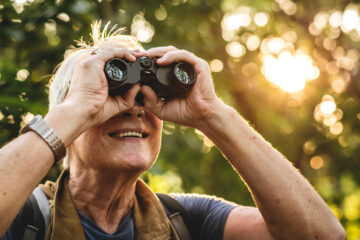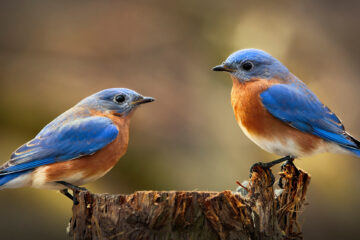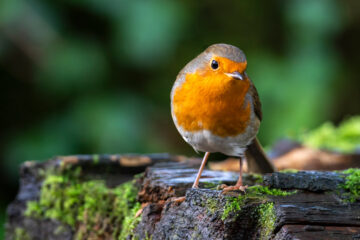Winging it: A Guide to Bird Watching
The engaging and intriguing activity of “birding,” sometimes known as “bird watching,” enables people to appreciate the beauty and intricacy of birds. One needs a few basic tools and knowledge to get started birding.
Getting an excellent field guide is the first step in beginning a birding hobby. Individuals can recognize the various bird species in their area with the aid of a field guide. The guide ought to include detailed illustrations, descriptions, and range maps of the birds you might see in your area. Second, a good set of binoculars are necessary for birders. With the aid of binoculars, you may observe birds up close without disturbing them. A decent pair of binoculars should be easy to use, have an 8x or 10x magnification, and be comfortable to hold.
“Many people take up bird watching as a way to maintain contact with nature and the environment, but for me, it’s a way of maintaining contact with the inner world of the psyche.”
– Sir David Attenborough
Once you have your equipment, it’s time to locate a suitable birding location. Search for locations like parks, marshes, or nature reserves that are known to have a lot of birds. In order to attract birds, you could also set up bird feeders in your own backyard. Bird watching is a thoughtful, observant hobby that demands slowing down and paying close attention. A good bird watcher will pay close attention to the birds and soak in their beauty in their natural surroundings.
“The thing that I enjoy the most about birding is the sense of discovery that comes from finding a bird that I’ve never seen before.”
– Kenn Kaufman
Your Bird-Watching Punchlist
- Purchase a reliable field guide: A field guide is a book that will assist you in recognizing the many bird species in your area. Look for a guide that includes descriptive text, range maps, and excellent images of the birds you are most likely to encounter in your area.
- Buy a pair of binoculars: You must invest in a pair of binoculars, you need to observe the birds without disturbing them. Seek for binoculars that are easy to focus, have an 8x or 10x magnification, and are comfortable to handle.
- Locate a good spot: Search for places like local parks, marshes, or nature reserves that have lots of areas where birds feel safe. Look for trees, bushes, or natural vegetation that helps protect the birds from predators. Another idea is setting up bird feeders in your own backyard.
- Be patient and perceptive: Bird watching involves both of these traits. Take your time and be meticulous in your observation. Note where flocks fly when they come into an area. Listen to the bird songs and see if you can pick out which bird is singing which song. Most importantly take in the beauty of the birds in their natural environment.
Extra Birding Credit
- Learn bird songs and calls: Birds often communicate through songs and calls, which can help you identify them even if you can’t see them. You can use websites or apps to learn the songs and calls of different bird species.
- Join a bird watching group: Joining a local bird watching group can be a great way to meet other bird watchers, learn from more experienced birders, and discover new birding locations.
Bird watching is a wonderful hobby that can be enjoyed by individuals of all ages and backgrounds. The basic requirements for starting birding include a field guide, binoculars, and a good location. Patience, attention to detail, and an appreciation for the beauty of birds are important traits for birders. As Sir David Attenborough and Kenn Kaufman have said, birding offers the chance to connect with nature and discover new and exciting species, making it a rewarding and enriching hobby.



0 Comments